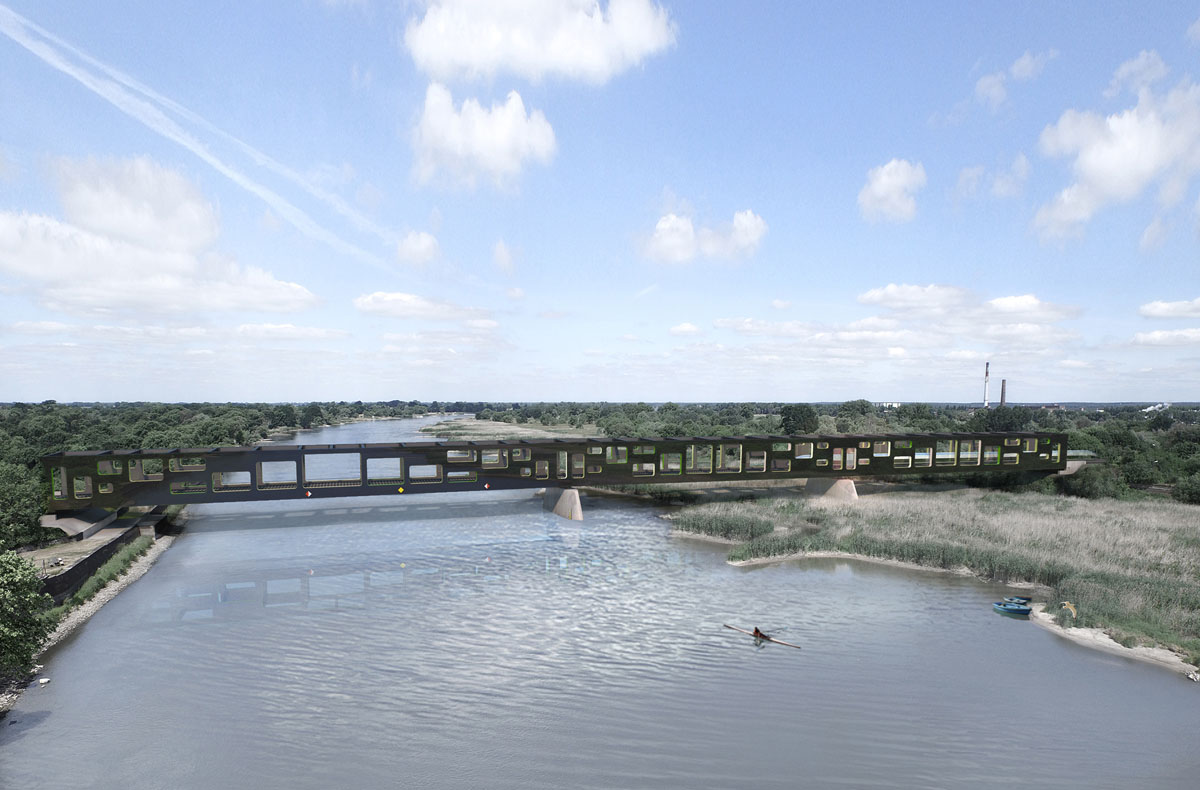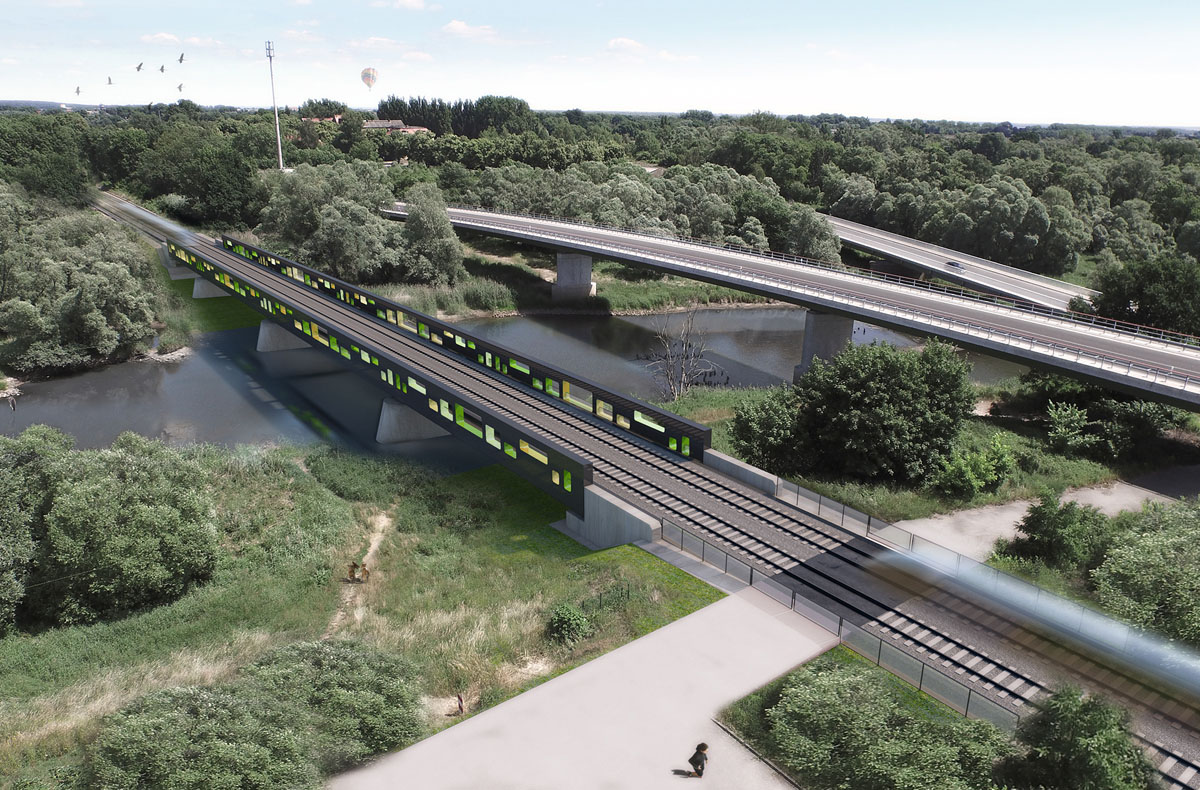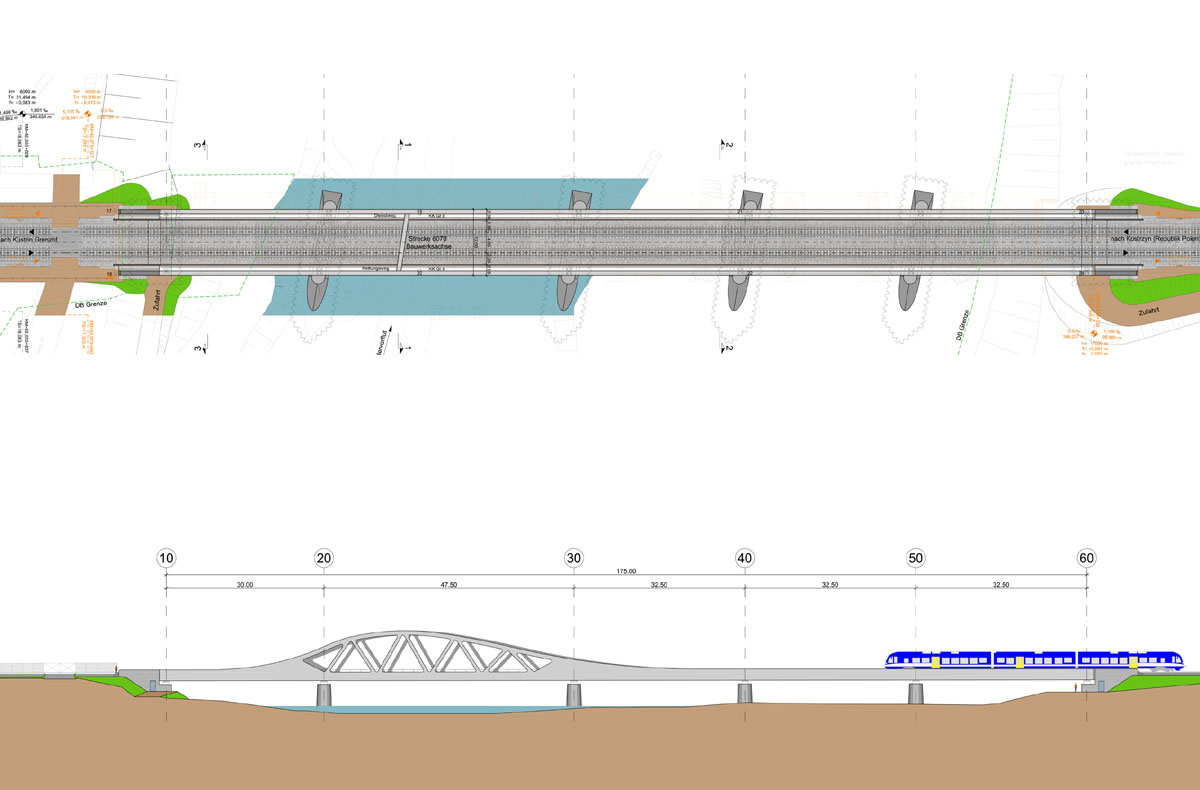task:
replacement construction of the railway bridges across the river Oder and the Odervorflut in Küstrin
client:
Deutsche Bahn AG
procedure type:
competition for two drafts 2015, invited, 2nd Prize and acquisition
cooperation:
netzwerkarchitekten and Pöyry Ingenieure
size:
length 270m and 130m
visualization:
luxfeld digital art, Darmstadt
Two different designs were submitted for the replacement of the railroad truss bridges across the Oder River and the Odervorflut between Kuestrin-Kietz, Germany, and Kostrzyn, Poland.
Design A – Wave: A wide, high arch, with truss braces arranged to create a filigree connection to the bridge roadway, spans the navigable waters of the Oder from the German side. Two smaller arches are proposed across the lowlands on the Polish side to complete the bridge. From a passing train and from the surrounding country, the undisturbed view of the charming Oderland remains intact. The clear geometry and bright appearance create a special bridge for this location.
Design B – Frame: Panels of glossy, dark anthracite metal, perforated by large openings, frame both sides of the bridge. Soffits are in shades of green, blending the bridge with the landscape. Train passengers have varying perspectives of the Oder landscape, enhanced by the iridescence. The geometric trough structure crosses the Odervorflut.
Two different designs were submitted for the replacement of the railroad truss bridges across the Oder River and the Odervorflut between Kuestrin-Kietz, Germany, and Kostrzyn, Poland.
Design A – Wave: A wide, high arch, with truss braces arranged to create a filigree connection to the bridge roadway, spans the navigable waters of the Oder from the German side. Two smaller arches are proposed across the lowlands on the Polish side to complete the bridge. From a passing train and from the surrounding country, the undisturbed view of the charming Oderland remains intact. The clear geometry and bright appearance create a special bridge for this location.
Design B – Frame: Panels of glossy, dark anthracite metal, perforated by large openings, frame both sides of the bridge. Soffits are in shades of green, blending the bridge with the landscape. Train passengers have varying perspectives of the Oder landscape, enhanced by the iridescence. The geometric trough structure crosses the Odervorflut.








